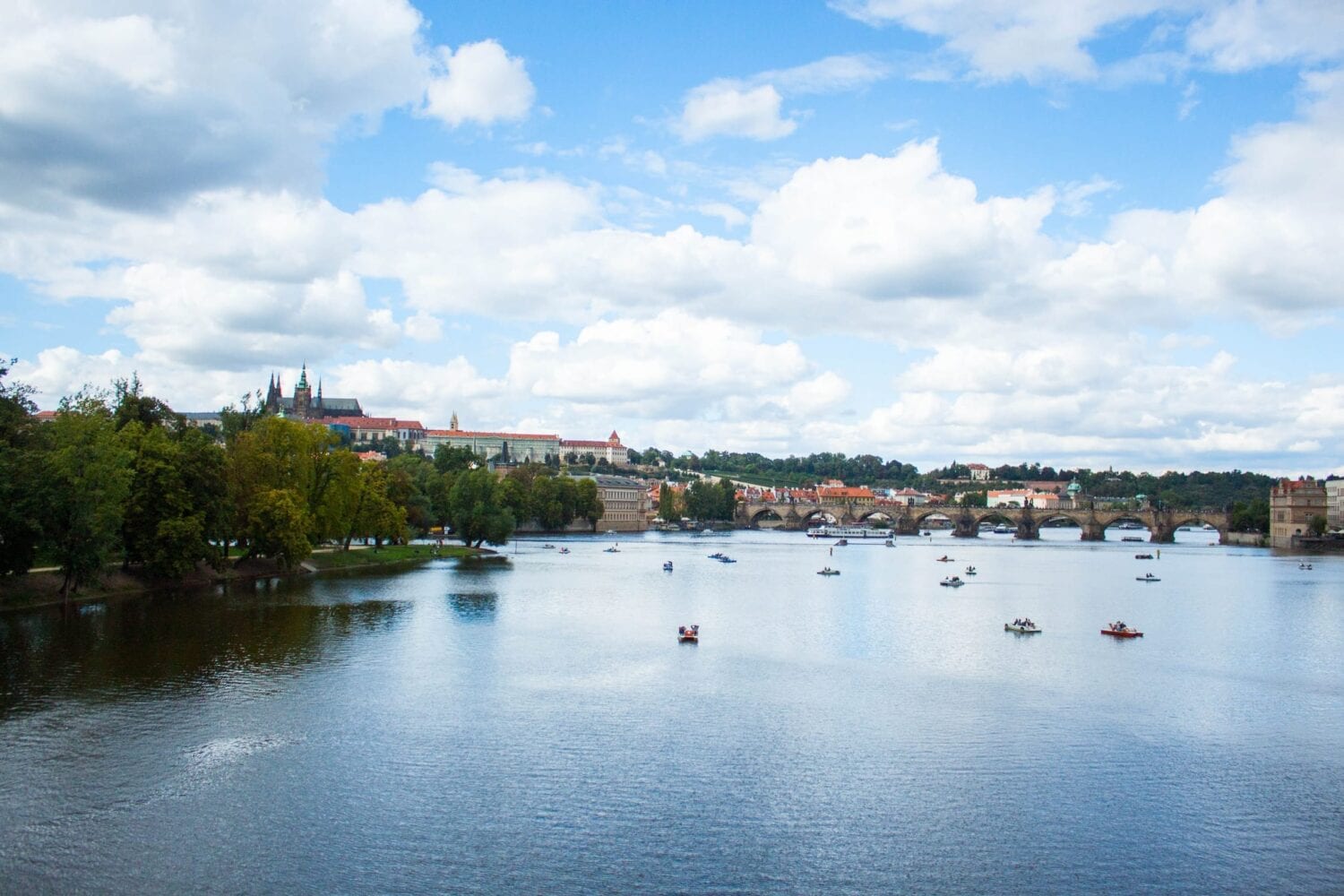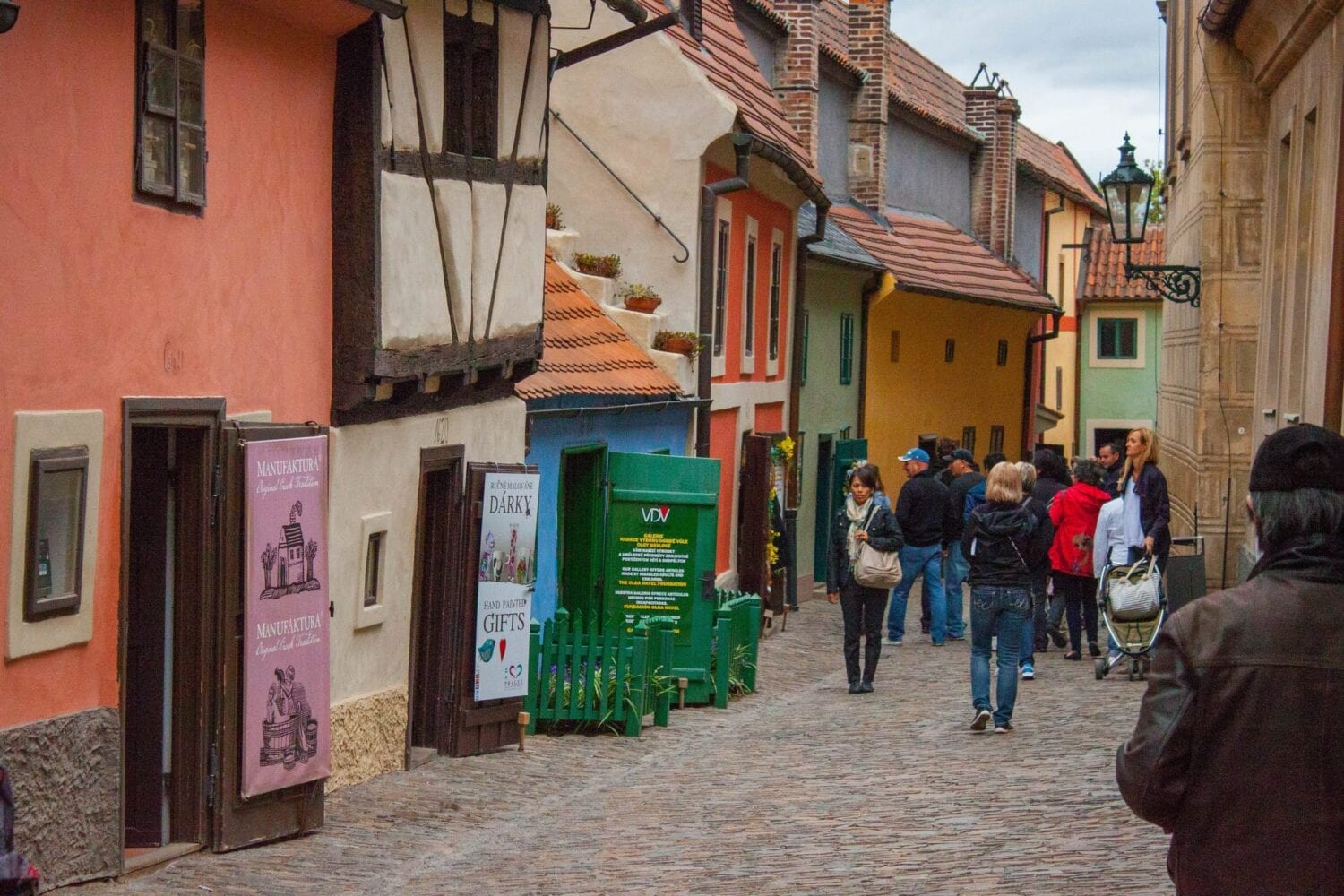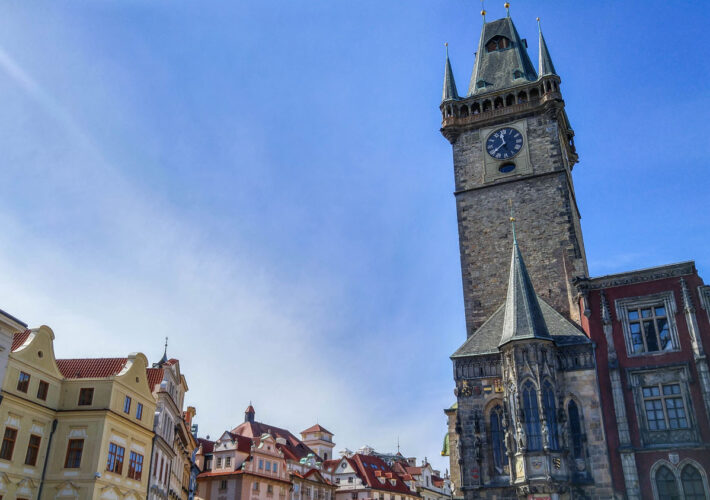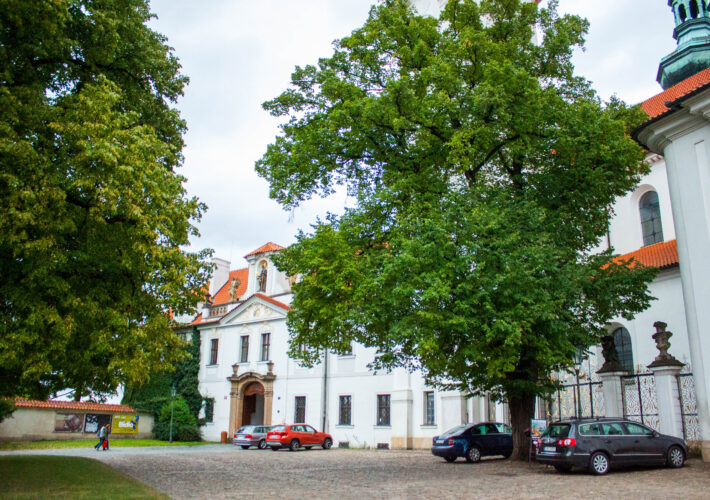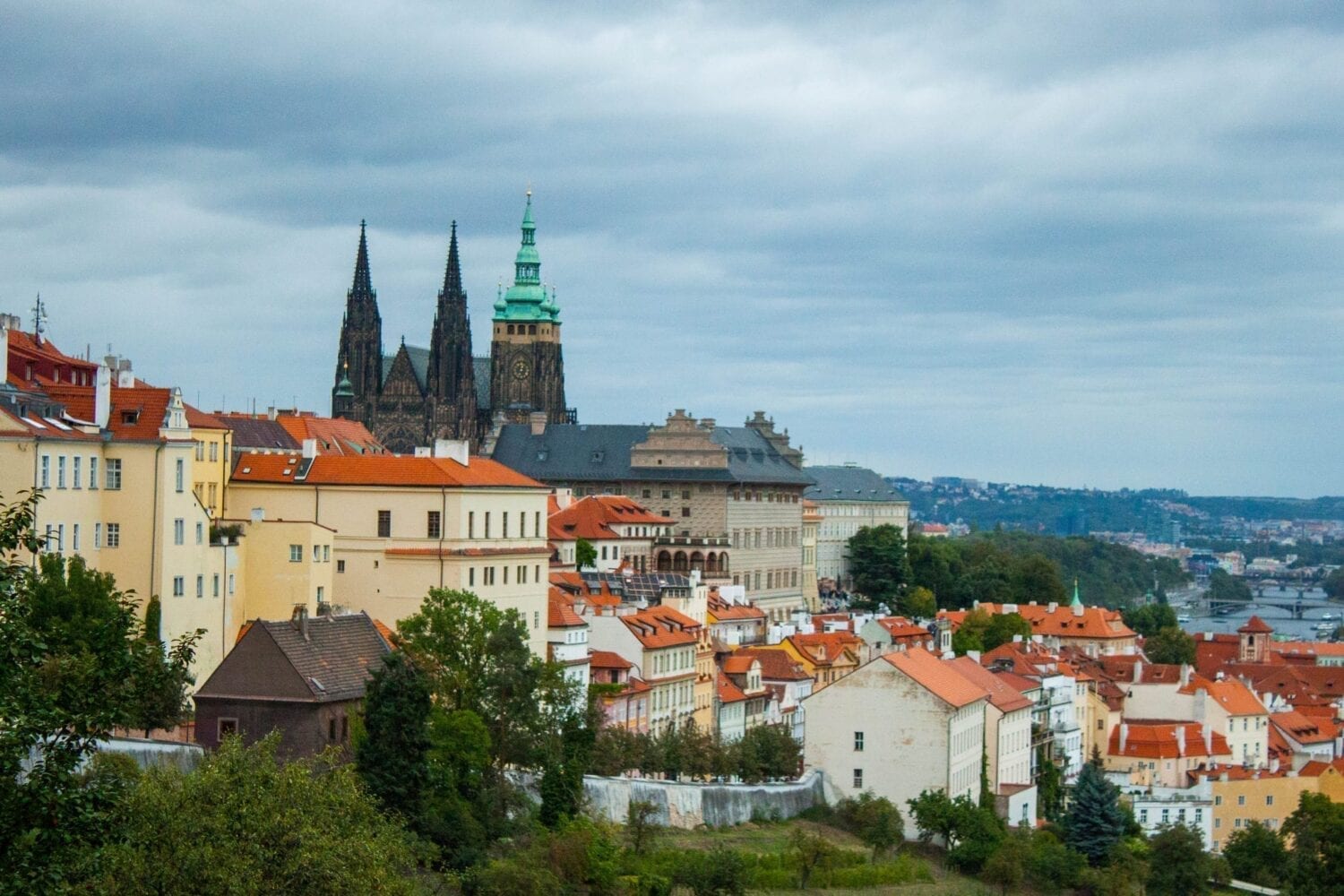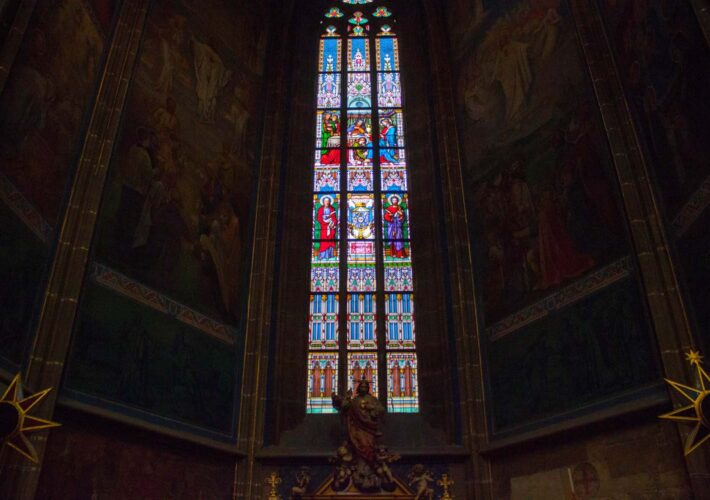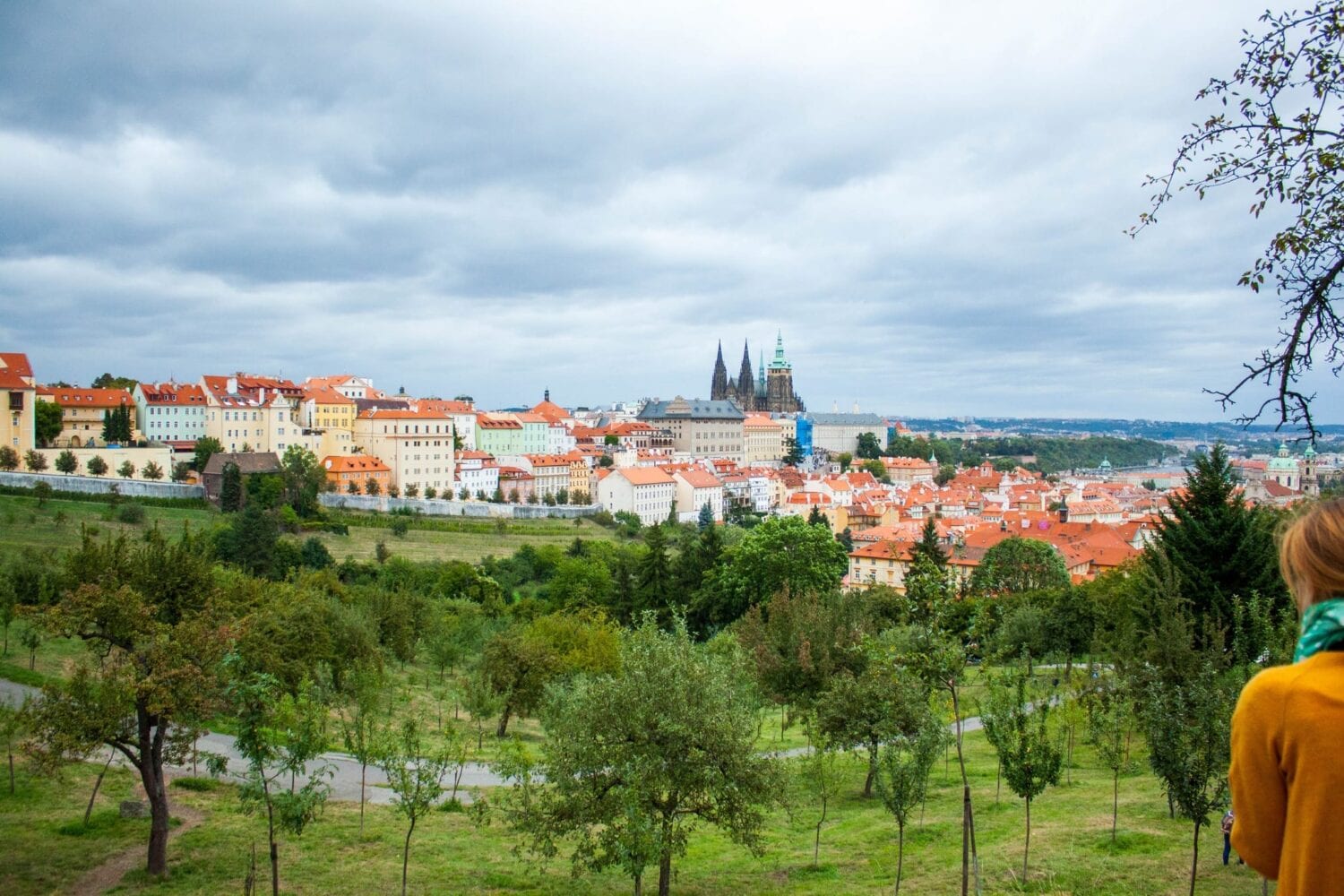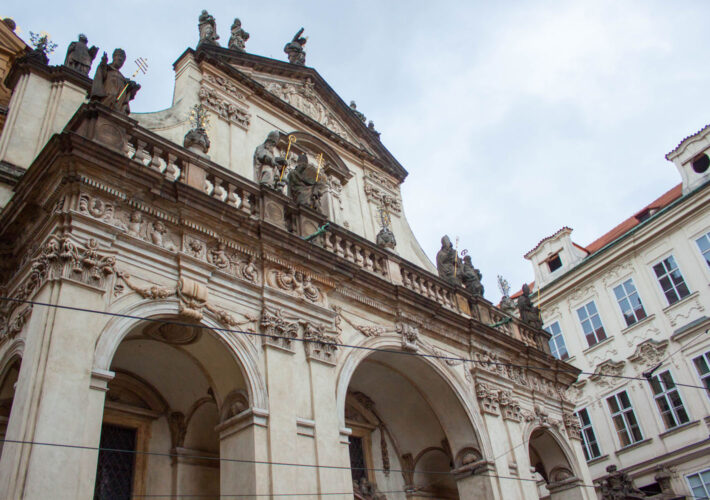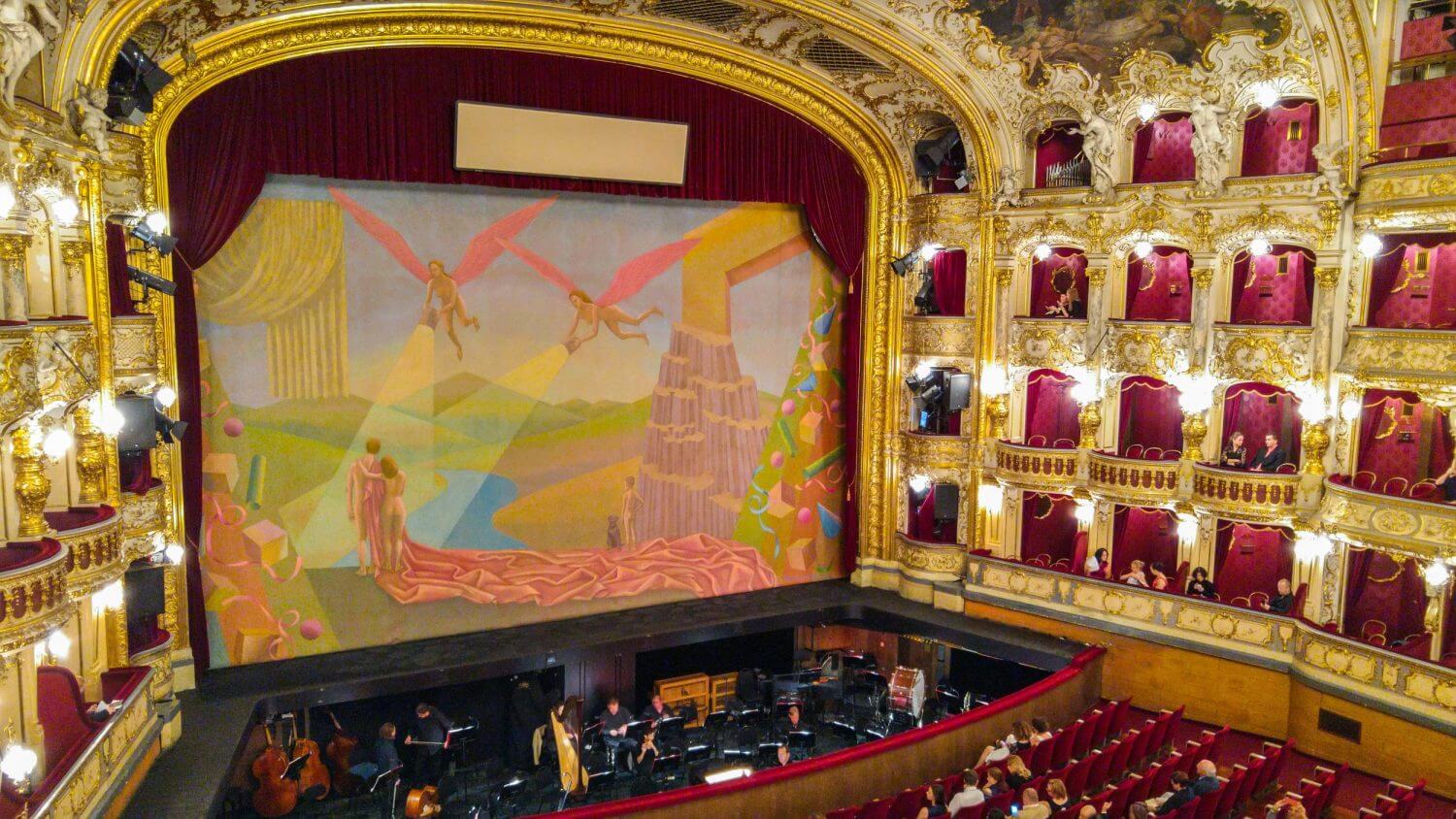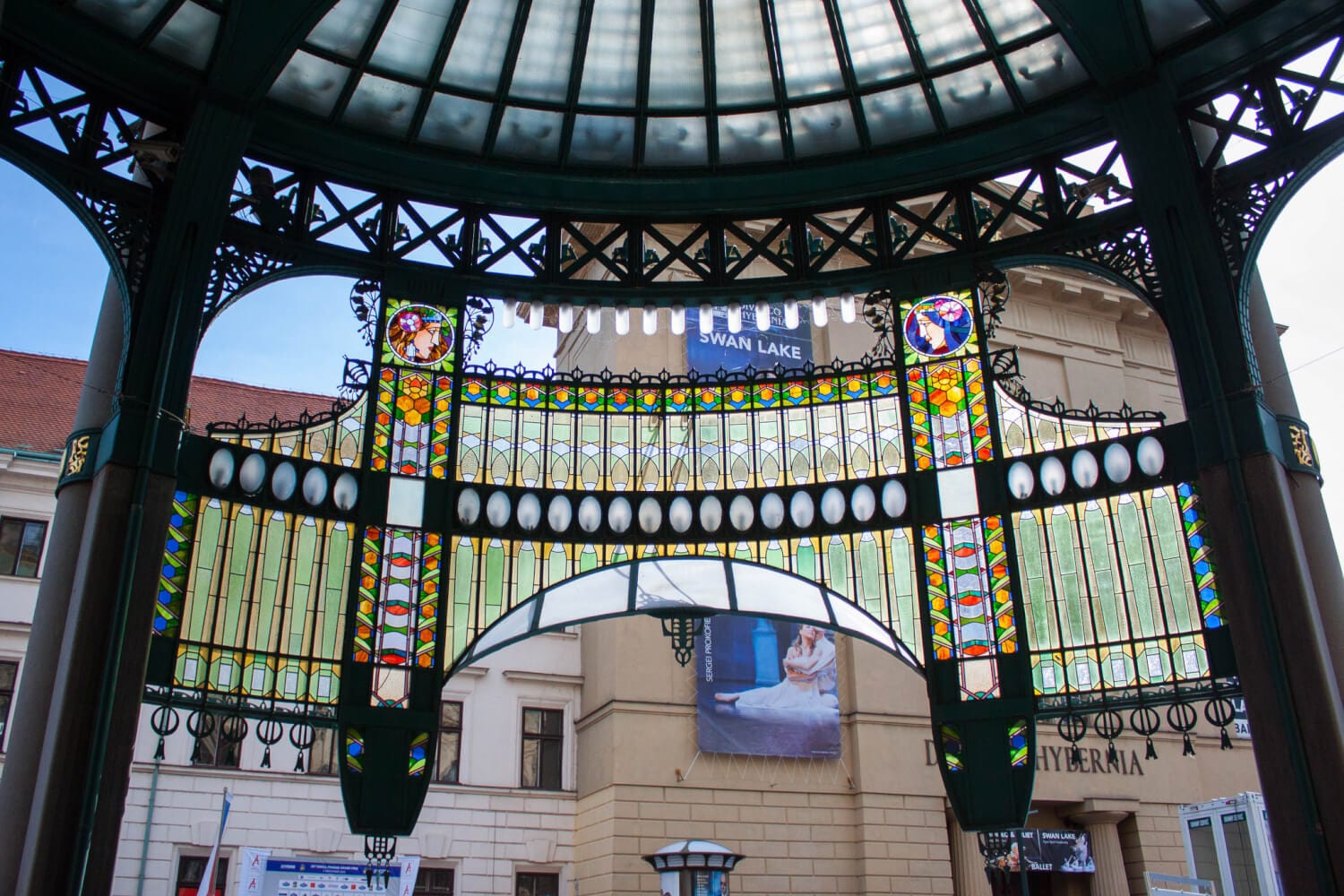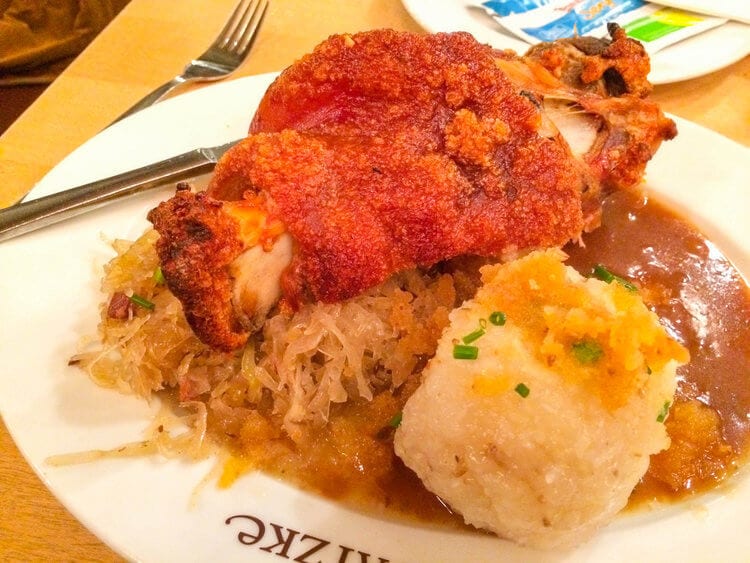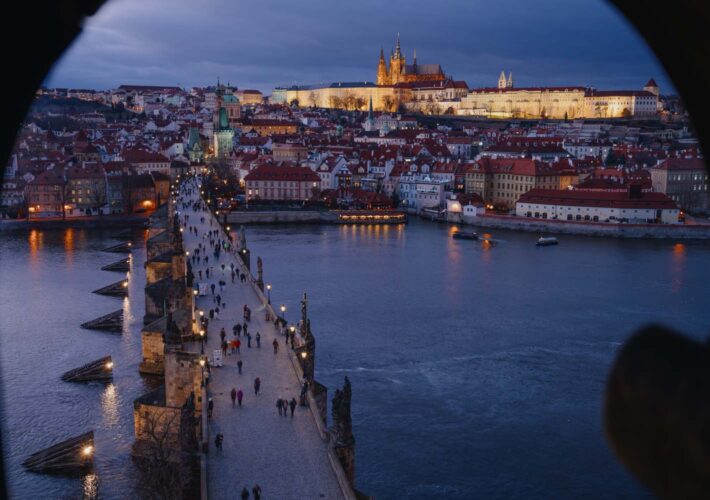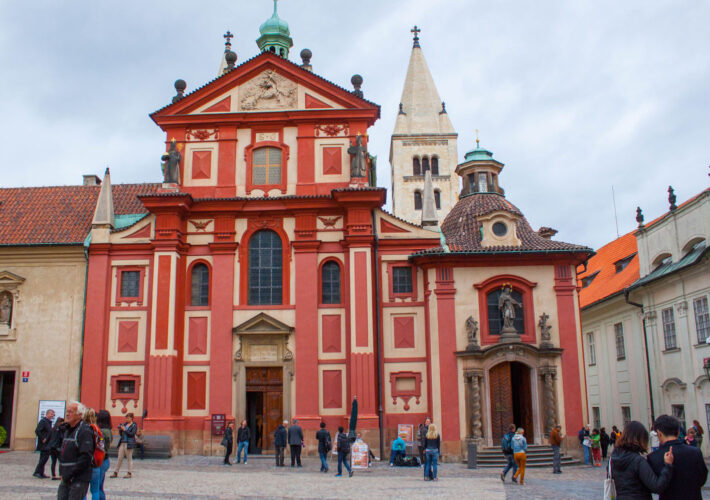One of my favourite parts of Prague was Malá Strana, or “Lesser Quarter”. Mala Strana itself is divided between the lower and upper halves of the hill. The upper half consists of Prague Castle, which is where the majority of tourists flock, with good reason, but the rest of Lower Town has a more subdued vibe. With less big-ticket attractions, you’ll find that there are slightly fewer tourists along these streets. But this area is still filled with historic Burgher houses, astonishing churches and adorable cafes and restaurants.
Golden Lane is one of Prague’s most picturesque streets. Located inside Prague Castle, this fairytale like laneway of pastel coloured homes was built in the castle’s fortifications at the end of the 16th century. To access the Golden Lane, you need to purchase a ticket for Prague Castle. Almost every different circuit ticket includes the Golden Lane and for a good reason, since no visit to Prague castle is complete without visiting Golden Lane.
Strahov Monastery in Prague and their illustrious shelves of parchment treasures, is a dream come true for any visitor. It is one of the greatest libraries of the world and well worth the effort of visiting if you come to Prague.
Prague is one of the captivating cities in Europe. It feels like walking through a baroque dream. While you can spend an entire weekend here just wandering the streets, there are a few things to avoid to ensure your trip is as stress and chaos free as possible.
St. Vitus Cathedral is one of the most astonishing churches in the world, and as such is filled with some of the most incredible pieces of art from across Europe. The best piece of art can be seen all over the walls. The stained glass windows of St. Vitus Cathedral are some of the most transcendent works of art which blend religious history and powerful human emotion.
One our first day in Prague we set out with our fantastic tour guide Barbora, from Prague Guides, who met us at our hotel and took us on a comprehensive tour of Prague from local’s perspective. Prague Guides were so affordable and gave you an intimate and personalised experience that is unmatchable.
Prague has some of the most beautiful libraries in the world, and although most of them are off-limits to the public, there are tours during certain times of the day which allow bibliophiles to soak up all the history and literary treasures that lie inside these old buildings.
The State Opera in Prague opened in 1888 was the New German Theatre. Although the outside of the building is rather drab, it is nothing compared to the incredible neo-renaissance decoration in the interior. The exterior of the building does feature decorations of busts of famous musicians such as Goethe, Mozart, Schiller as well as characters from mythology, always significant in Operas, such as Pegasus, Icarus, Cupid, Athena, Leda and others.
This beautiful, art nouveau building is one of Prague’s most beloved buildings. It was once the seat of the old Royal Court Palace but has since been transformed into what is known today as the Municipal House or Obecní dům. In 1485, the old Royal Court was abandoned with the dissolution of Bohemia, and it wasn’t until 1920 when the now Municipal House was built.
The bridge was constructed in 1357 under the watchful eye of King Charles IV. The old bridge which connected the two parts of the city, built in 1158, was more than due for some repairs. It was severely damaged in a flood in 1342 which lead to its demolition and the construction of the new Charles Bridge, named after the King. The reason this bridge was always so important was that it connected the castle past of town to the city’s old town.
You can’t visit Prague without sampling their beer. It’s honestly such a HUGE part of their culture and cuisine. Every bar has their unique home brew as well as hundreds of other local varieties.
Prague Castle is in fact, more like a walled, medieval village, rather than one singular castle. Inside these walls are some of Prague’s most famous architectural masterpieces. Combined into compound, this mini-city was named, “Prague Castle”.

